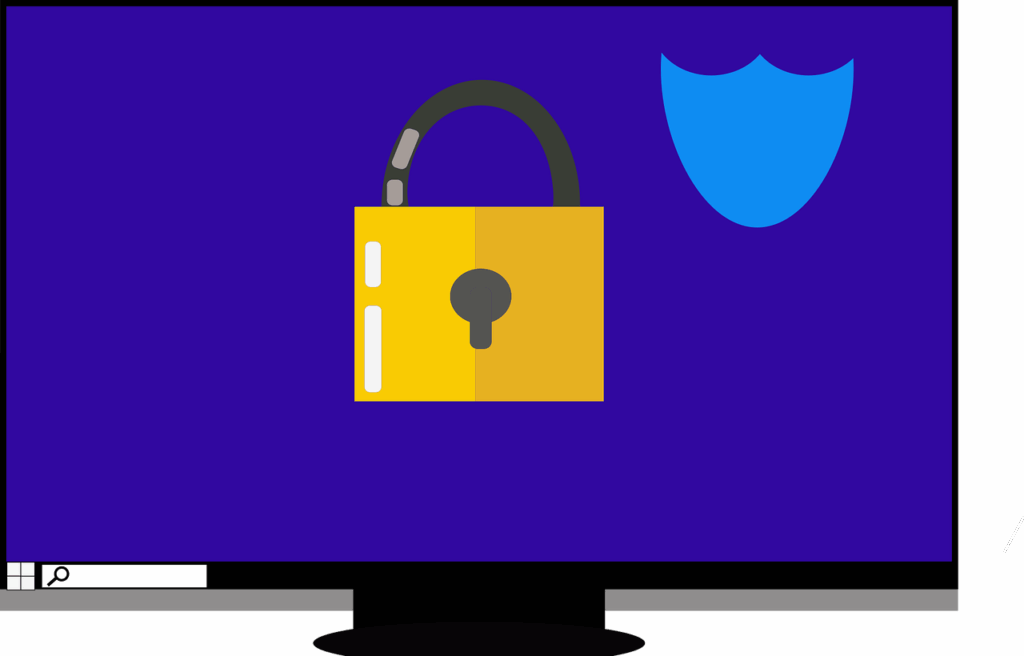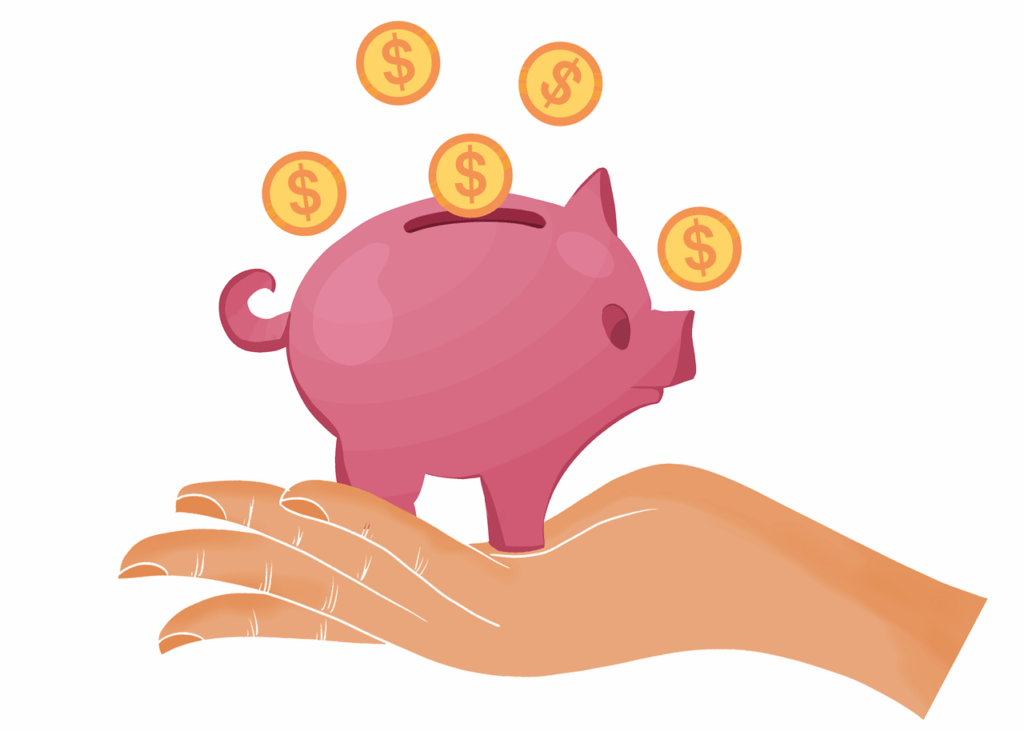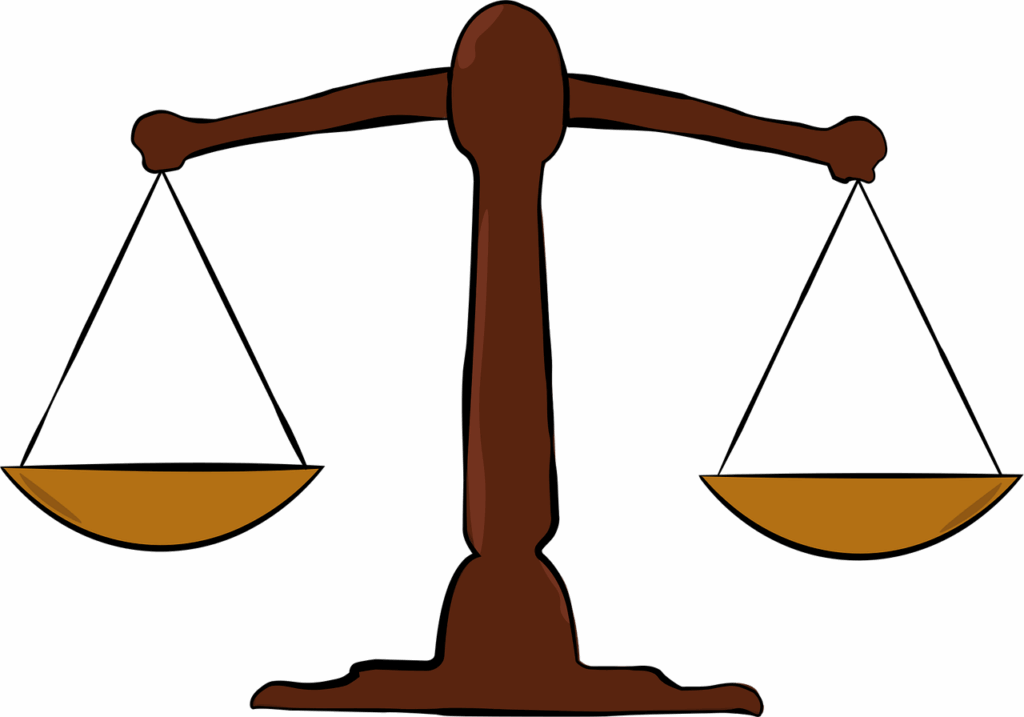
The journey to financial empowerment often begins with a single, powerful tool: a well-crafted budget. In a world brimming with financial uncertainties and endless temptations for spending, gaining control over your money isn’t just a smart move—it’s a transformative act. It’s about telling your money where to go, rather than constantly wondering where it went, empowering you to achieve your dreams, from building an emergency fund to saving for that dream home, or even just finding peace of mind.
Far from being a restrictive chore, budgeting is truly an act of self-care and strategic planning. It’s your personal financial blueprint, designed to help you decide how to best spend your hard-earned money while intelligently setting aside funds for savings and diligently working towards reducing or avoiding debt. With the right approach and the perfect tools, you can demystify your finances, uncover hidden spending patterns, and pave a clear path towards financial stability and freedom.
This in-depth guide is designed to equip you with the knowledge and practical strategies needed to master your money. We’ll dive into various budgeting systems, explore essential preparatory steps, and unveil effective methods that cater to different financial personalities and goals. Whether you’re a meticulous planner or someone looking for simple guidelines, you’ll find actionable insights to transform your financial habits and take confident strides towards a more secure future.

1. **Decoding the Budget Planner: Your Personal Financial Roadmap**
A budget planner is more than just a worksheet or a template; it’s a dynamic tool that empowers you to consciously design your financial future. At its core, it serves as your personal financial roadmap, providing a structured way to visualize your income and expenditure. It moves you from passively reacting to your money to actively dictating its journey, helping you align your spending with your values and long-term aspirations.
The fundamental purpose of a successful budget planner is to guide your financial decisions. It helps you prioritize where your money goes, ensuring that essential needs are met, desired “wants” are accounted for, and crucial amounts are set aside for savings and debt reduction. This proactive approach prevents you from overspending, enables you to identify areas for cost-cutting, and ultimately fosters a sense of control over your economic life.
Ultimately, the effectiveness of a budget planner lies in its ability to translate abstract financial goals into concrete, manageable actions. By meticulously logging and reviewing your financial inflows and outflows, you gain invaluable insights into your habits. This clarity is the first step toward making informed choices, allowing you to tweak your spending patterns, build a resilient financial foundation, and move confidently towards achieving your unique financial objectives.
2. **Before You Begin: Gathering Essential Financial Information**
Embarking on your budgeting journey requires a clear snapshot of your current financial landscape. Before you even think about numbers or categories, the most critical preparatory step is to gather all your key financial information. This foundational data acts as the bedrock for a truly accurate and effective budget, preventing guesswork and ensuring that your plan reflects your real-world financial situation.
First and foremost, you’ll need to pinpoint your take-home pay, which is your monthly income after all taxes and deductions have been applied. A pay stub is typically the easiest and most reliable source for this figure. Knowing your precise net income is paramount because it’s the actual amount you have available to allocate. This realistic starting point prevents the common pitfall of basing your budget on gross income, which can lead to overestimation and subsequent financial strain.
Beyond income, you must also account for your expenses, categorized into fixed and variable costs. Fixed expenses are those predictable, recurring payments that remain constant each month, such as housing and utility payments, insurance premiums, and loan installments. Variable costs, on the other hand, fluctuate month to month, encompassing expenditures like groceries, gas, dining out, and entertainment. Reviewing past account statements and transactions is invaluable here, helping you estimate these changing figures with greater accuracy and ensuring every dollar’s destination is considered.
Finally, a comprehensive understanding of your debts, including their interest rates, is absolutely vital. This includes credit card debt, medical debt, student loans, and any other liabilities. By having this information readily available, you ensure that debt repayment is integrated directly into your budget, rather than being an afterthought. A complete financial picture at the outset makes the entire budgeting process smoother, more accurate, and ultimately, far more successful in achieving your financial goals.
3. **The 50/30/20 Rule: A Foundation for Balanced Spending**
For many embarking on their budgeting journey, the 50/30/20 rule championed by NerdWallet offers an incredibly intuitive and accessible framework. This popular guideline suggests a straightforward allocation of your after-tax income: 50% dedicated to needs, 30% to wants, and the remaining 20% strategically directed towards savings and debt repayment. It provides a clear, actionable structure without being overly restrictive, making it an excellent starting point for those seeking balance.
The genius of the 50/30/20 rule lies in its ability to simplify complex financial planning into three digestible categories. “Needs” encompass all your absolute necessities for living, such as housing, utilities, groceries, and essential transportation. “Wants” cover discretionary spending—things that improve your quality of life but aren’t strictly required, like dining out, entertainment, and non-essential shopping. The “savings and debt repayment” portion is crucial for building a secure future, whether it’s an emergency fund, a retirement account, or aggressively paying down high-interest debt.
It’s important to view the 50/30/20 breakdown not as an unbendable decree, but rather as an ideal to progressively work toward. Life circumstances, income levels, and cost of living can all impact the immediate feasibility of these exact percentages. However, by using it as a guiding principle, budgeters can continuously assess their spending, identify areas for adjustment, and strive to align their financial habits more closely with this balanced allocation. It provides a flexible yet powerful blueprint for achieving financial equilibrium and long-term prosperity.
Read more about: Unlock Your Financial Potential: A Comprehensive Guide to Budgeting Methods That Actually Work

4. **The 60/30/10 Budget: Tailoring to Tighter Financial Realities**
While the 50/30/20 rule offers an excellent ideal, it’s understandable that it might feel out of reach for everyone, especially those facing specific financial constraints. This is where the 60/30/10 budget emerges as a pragmatic and equally structured alternative. This method acknowledges varying financial landscapes by allocating a larger portion of income to immediate needs, making it a more accessible starting point for many individuals and families.
Under the 60/30/10 framework, 60% of your take-home pay is designated for needs, 30% for wants, and 10% for savings and debt repayment. This slight adjustment, particularly the increased percentage for needs, can make a significant difference for those with lower incomes or individuals residing in higher cost-of-living areas. It allows for greater flexibility in covering essential living expenses without completely sacrificing the crucial components of wants and, most importantly, future savings.
For example, consider an individual with a monthly take-home pay of $3,000. With the 60/30/10 budget, you would devote $1,800 to needs, $900 to wants and $300 toward savings. That’s as opposed to the 50/30/20 breakdown: $1,500 for needs, $900 for wants and $600 for savings. While ideally, one might aspire to contribute more than 10% to savings, this framework offers a realistic and achievable stepping stone towards greater financial stability, proving that the “best budget is one that works for you.”

5. **Zero-Based Budgeting: Assigning a Purpose to Every Single Dollar**
For those who find themselves frequently overspending or who possess a meticulous desire to track every penny, the zero-based budget presents a powerful and highly intentional approach to financial management. Unlike broad guidelines, this method demands absolute specificity, ensuring that every single dollar of your income is assigned a defined purpose until your budget effectively reaches zero. It transforms passive spending into active, deliberate financial decision-making.
The core principle of zero-based budgeting is deceptively simple: your income minus your expenses must equal zero. This doesn’t mean you spend all your money; rather, it means every dollar has a job—whether it’s covering a bill, contributing to savings, paying down debt, or even allocated to discretionary “fun” money. This approach forces you to confront your financial realities head-on, preventing funds from “disappearing” without a trace and ensuring complete control over your cash flow.
Consider the example: You would make a plan for every bit of that $3,000, allocating specific amounts to housing, groceries, debt payments, savings and so on. If you have $200 left unassigned after covering essentials, you’d give that money a purpose, too — perhaps by putting it toward entertainment or dining out. This level of detail empowers budgeters to maximize their financial potential, eliminate wasteful spending, and align every expenditure with their overarching financial objectives.

6. **The Cash Envelope System: A Hands-On Approach to Controlling Impulse Spending**
For individuals who struggle with impulse spending or prefer a more tangible connection to their money, the cash envelope system offers an exceptionally effective solution. This method, while similar to zero-based budgeting in its intentionality, provides a physical (or virtual) barrier against overspending, making it particularly powerful for those who find it challenging to stick to digital limits alone. It brings a grounded, old-school discipline to modern financial management.
The concept is beautifully straightforward: With the cash envelope system, you allocate a set amount of money to each item in your budget. You then create envelopes — real, or virtual ones through an app — for each category and stuff the set amount of cash in them. Once the envelope is empty, you can’t spend any more. There’s no swiping a card and accumulating debt; the physical limit enforces immediate accountability.
Imagine: For your $3,000, you would literally (or virtually) put a certain amount of money in envelopes that are assigned to various categories. Say there was $100 in your dining out envelope, and you’ve already spent $90. Since there’s only $10 left in your envelope, you would know to skip the dinner plans. This immediate visual and tactile feedback makes the consequences of spending clear and helps cultivate disciplined habits, transforming sporadic purchases into mindful financial decisions.

7. **Pay-Yourself-First Budget: Securing Your Financial Future First**
Also known as reverse budgeting, the “pay-yourself-first” system represents a fundamental shift in financial prioritization, advocating for the strategic allocation of money towards long-term goals *before* addressing other expenses. This powerful approach is ideal for individuals who are committed to building wealth and securing their future but may not wish to meticulously track every single penny, offering a balance between discipline and flexibility.
The core philosophy dictates that as soon as your income arrives, a predetermined portion is immediately tucked away into savings, investments, or debt repayment accounts. This could include contributions to your 401(k) and IRA or an emergency fund. By automating these transfers and making them the very first financial action of your month, you ensure that your future self is taken care of, making saving a non-negotiable priority rather than an afterthought dependent on leftover funds.
For example: The first thing you do with that $3,000 is stash $300 for your IRA and $100 for your emergency fund. As for the rest, you would budget as you wish but likely wouldn’t be as meticulous as with the zero-based or envelope systems. This method effectively removes the temptation to spend savings, as the money is already out of sight and actively working for your future. It’s a proactive, robust strategy for building sustainable financial habits and accelerating progress towards your most significant financial aspirations.
Welcome back to our journey toward financial mastery! After exploring various budgeting methodologies, it’s time to deepen our understanding of what a budget truly entails and how to actively construct one that champions your unique aspirations. This section isn’t just about the numbers; it’s about embracing a philosophy that empowers you to live smarter, plan bolder, and achieve lasting financial peace. We’ll uncover the core principles of sustainable money management, walk through a practical five-step blueprint for your monthly budget, and demystify the key spending categories that shape your financial life. Get ready to turn abstract financial goals into tangible realities, because controlling your money is the ultimate act of self-care.

8. **What is a Budget? Your Personal Financial North Star**
At its heart, a budget is more than just a tedious spreadsheet; it’s an intelligent estimate and a methodical plan for your income and expenditures. Think of it as your personal financial compass, guiding every dollar you earn towards its designated purpose. It allows you to consciously decide where your money goes, ensuring it aligns with your values and paves the way for your aspirations, rather than simply watching it disappear each month.
Ultimately, budgets are powerful tools created with specific financial goals in mind. Whether you’re aiming to conquer credit card debt, reach a significant savings milestone, or simply get your income and expenses back on track, a budget provides the structure you need. It’s a proactive blueprint for your money, moving you from passively reacting to your finances to actively dictating their journey, fostering a profound sense of control.
The beauty of budgeting lies in its versatility. There are countless ways to approach it, from traditional pen-and-paper methods to sophisticated budgeting apps and software. The key isn’t finding the *perfect* tool, but rather finding the one that genuinely resonates with you—the one you’ll consistently stick with. Because, as many financial experts will tell you, the most effective budget is the one you actually use.

9. **Living Within Your Means: The Art of Smart Spending**
One of the foundational pillars of successful personal finance, and indeed of budgeting itself, is the principle of “living within your means.” This concept is beautifully simple: spend less than you earn. While it sounds straightforward, it’s a practice that many find challenging, often leading to accumulating debt and financial stress. However, mastering this principle is a game-changer for long-term financial health.
Why do so many struggle with this seemingly simple idea? The context points to several common pitfalls. One significant reason is simply “spending more than their income allows,” which, over time, snowballs into deeper debt. Another powerful social pressure is “trying too hard to keep up with the Joneses,” a phenomenon driven by conspicuous consumption where spending on luxury goods publicly displays economic power, often at the expense of one’s own financial stability.
Overly relying on credit is another common trap, as borrowed money can temporarily allow people to live beyond their means. However, this often leads to a sticky financial situation if unable to repay on time. Furthermore, a lack of financial knowledge or prevalent misinformation can also lead individuals astray. Embracing the principle of living within your means is about making conscious choices, understanding your true financial capacity, and prioritizing your economic well-being over external pressures or temporary gratifications.
Read more about: Unlock Your Financial Potential: A Comprehensive Guide to Budgeting Methods That Actually Work

10. **Planning for the Future: Charting Your Course to Prosperity**
Beyond simply managing your current cash flow, another indispensable core principle of budgeting is actively “planning for the future.” Just as corporations meticulously budget and forecast for their success, individuals must do the same to achieve their personal financial goals. It’s incredibly difficult to build wealth or reach significant milestones without a clear, forward-looking plan.
Proper financial planning allows you to predict your future financial standing based on best estimates of your income and expenses. This foresight is invaluable, enabling you to proactively prepare for various life events and opportunities. It shifts your financial approach from reactive to proactive, empowering you to shape your destiny rather than just letting it happen.
The benefits of planning for the future are truly extensive and impactful. It helps in “mitigating sudden misfortunes” by building a resilient financial safety net, such as “loading up on emergency funds.” This preparedness enables you to “weather heavy-debt seasons” and get ready for exciting life changes like “the purchase of a new house, car, or other major purchase.” Moreover, planning assists in “properly managing investments,” “preparing for retirement, children, or education,” and “purchasing appropriate insurance plans,” ensuring every aspect of your future is considered and secured.

11. **Your Five-Step Blueprint for Crafting a Monthly Budget**
Ready to put these philosophies into action? Creating your monthly budget doesn’t have to be daunting. In fact, it can be broken down into five simple, actionable steps that empower you to take control. These steps provide a clear roadmap, whether you prefer a pen-and-paper approach, a spreadsheet, or a modern budgeting app like EveryDollar.
The journey begins with Step 1: **List your income.** This means tallying all the money you expect to receive during the month, focusing on your *net income* after taxes and deductions. Don’t forget any extra earnings from side hustles, freelance work, or even a garage sale! If your income fluctuates, a smart strategy is to budget based on your lowest expected earnings, adjusting later if more comes in.
Step 2 is to **List your expenses.** This is where you plan for every dollar going out. A crucial tip here is to prioritize. Start with what’s truly essential: giving, saving, and “The Four Walls”—food, utilities, shelter, and transportation. After these foundational categories, move on to other important expenses like insurance and debt, then finally, non-essentials like personal spending and entertainment. Don’t forget a miscellaneous line for unexpected costs!
Once you have your income and expenses listed, Step 3 is straightforward: **Subtract expenses from income.** Ideally, you’re aiming for zero, meaning every dollar has a job, whether it’s allocated to a bill, savings, or fun. Step 4 is paramount: **Track your expenses (all month long).** This is where the rubber meets the road. Tracking *all* your spending, no matter how small, is essential to prevent overspending and truly understand where your money is going. And finally, Step 5: **Make a new budget before the month begins.** Financial life is dynamic, so your budget should be too. Review, learn, and adjust for the next month, ensuring it remains a living document that serves your evolving financial reality.
12. **Smart Spending: Prioritizing Your Essential Expenses**
When you sit down to list your expenses, it’s easy to feel overwhelmed by the sheer number of categories competing for your hard-earned cash. This is where smart prioritization comes in, allowing you to strategically allocate funds and ensure your most critical needs are always met first. It’s about building a robust financial foundation before indulging in the extras.
Many financial experts advocate for focusing on what are often called “The Four Walls” as your top priority. These essentials are: food, utilities, shelter, and transportation. These are the absolute necessities that keep a roof over your head, the lights on, food on your table, and you able to get to where you need to be. By securing these categories first, you ensure basic stability before anything else.
After addressing these core needs, you can then move to other important financial commitments. This includes essentials like insurance payments, diligently working on debt repayment, and covering childcare costs. Only after these critical areas are accounted for should you turn your attention to non-essential spending, often dubbed “fun money” or entertainment. It’s also wise to always include a miscellaneous line, a small buffer for those inevitable, unexpected expenses that pop up.
It’s vital to remember that budgeting is a personal journey. While these prioritization guidelines offer a fantastic starting point, your exact budget percentages will naturally vary based on your income, lifestyle, and unique circumstances. The goal is to customize your categories and spending limits to create a plan that truly works for you, empowering you to make mindful choices that reflect your financial goals.
Read more about: Mastering Your Retirement Budget: Real-World Insights from a 65-Year-Old Retiree’s Monthly Spending Plan
13. **Your Daily Dollars: Decoding Housing, Transportation, and Living Costs**
Now that we’ve grasped the budgeting blueprint and how to prioritize, let’s dive into some of the most significant budget categories that shape our everyday financial lives. These are the areas where our money often flows fastest, and understanding them is key to finding opportunities for smarter spending and increased savings.
**Housing & Utilities** typically represent the largest portion of most people’s monthly expenses, whether it’s rent or a mortgage. A common guideline suggests housing costs should ideally be no more than 30% of your monthly gross income. If you find yourself exceeding this, exploring options like refinancing, relocating to a more budget-friendly area, or even downsizing could offer significant relief. Smaller, yet impactful, savings can come from transitioning to energy-efficient technologies like smart thermostats or LED lighting. Utilities themselves, encompassing electricity, gas, water, internet, and phone, generally account for 5–10% of total expenses and can fluctuate seasonally, so planning for these variations is essential.
**Transportation** expenses are another substantial category, often dominated by car payments. A good rule of thumb is to keep monthly car payments under 10% of your gross income, with total transportation costs (including fuel, maintenance, and insurance) staying below 15%. Consider whether public transport, carpooling, biking, or walking are viable options to reduce costs and environmental impact. For car owners, choosing a fuel-efficient vehicle, maintaining it regularly with oil changes and tire inflation, and practicing mindful driving habits can significantly cut down on gasoline expenses and avoid costly fines or insurance hikes.
Finally, **Living Expenses** cover your daily needs, with “Food” and “Meals Out” often taking a substantial bite. While these may seem insignificant individually, they add up quickly. A combined food and dining out expense should ideally be less than 15% of your income. Cooking at home is almost always more cost-efficient than eating out, offering a large “wiggle room” for budget improvement. Don’t forget essential household supplies like cleaning products, toiletries, and laundry services, which typically make up 2–5% of your budget—these small, recurring costs are easy to overlook but crucial to track.

14. **Investing in Yourself: Debt, Savings, and Long-Term Goals**
As we round out our exploration of key budget categories, it’s time to focus on the areas that truly build a secure and prosperous future: managing debt, cultivating savings, and planning for life’s significant milestones. These categories are where your proactive financial decisions can make the most profound, lasting impact.
**Other Debt & Loan Payments** are critical to address. While credit cards often carry negative connotations, they can be a tool for savings and building credit when used judiciously. However, for those on constrained budgets, it’s imperative to use them sparingly to avoid large interest payments that can strain finances. Dedicate 5–10% of your monthly budget to debt repayment, always making at least the minimum payment. Remember, clarity is key: avoid “double-dipping” by counting the same debt payment twice across different categories, ensuring accuracy in your budget.
**Savings & Investments** are the bedrock of financial independence. Healthy budgets consistently allocate excess money towards the future, encompassing emergency funds, retirement accounts, and college savings. It’s impossible to overstate the importance of an emergency fund; it can truly be the difference between falling into debt or staying afloat during unexpected life events. Aim for 15% or higher for your total savings and investments, as consistent contributions, especially early on, maximize returns and can even lead to an earlier retirement. Specific retirement planning, such as 401(k) and Roth IRA contributions, should specifically target 5–15% of your monthly income.
Finally, let’s touch upon other vital categories that impact your long-term well-being. **Healthcare** is an unavoidable expense, often consuming 2–5% of income even with insurance. Strategies like using in-network providers, reassessing insurance needs, and utilizing Health Savings Accounts (HSAs) can help manage costs. **Children & Education** are significant investments, often requiring 5–10% of a family budget; planning for these costs, including student aid and loan consolidation, is crucial. Even **Miscellaneous Expenses** like personal care, hobbies, gifting (1–5%), and pet care (1–5%) are important. While pliable, these categories offer room for personal discretion—they can either wreck a budget with over-expenditure or ease stress and heal finances with moderation, emphasizing that every dollar has a purpose and a place in your meticulously crafted plan.
Read more about: Beyond the Mansions: 14 Shocking Habits That Make Everyday Millionaires Stand Out – You Won’t Believe Number 7!
Mastering your budget is an ongoing journey, not a one-time event. It’s about empowering yourself with knowledge, making intentional choices, and continually adapting your financial plan to fit your life’s evolving landscape. The most effective budget is ultimately the one you commit to, adjust as needed, and allow to guide you towards the financial freedom and peace of mind you deserve. Keep tweaking, keep tracking, and keep thriving—your financially secure future is absolutely within reach!







